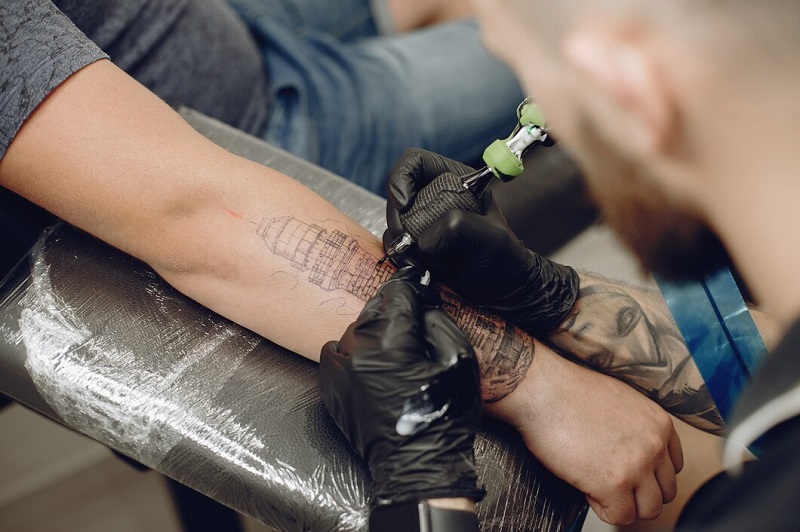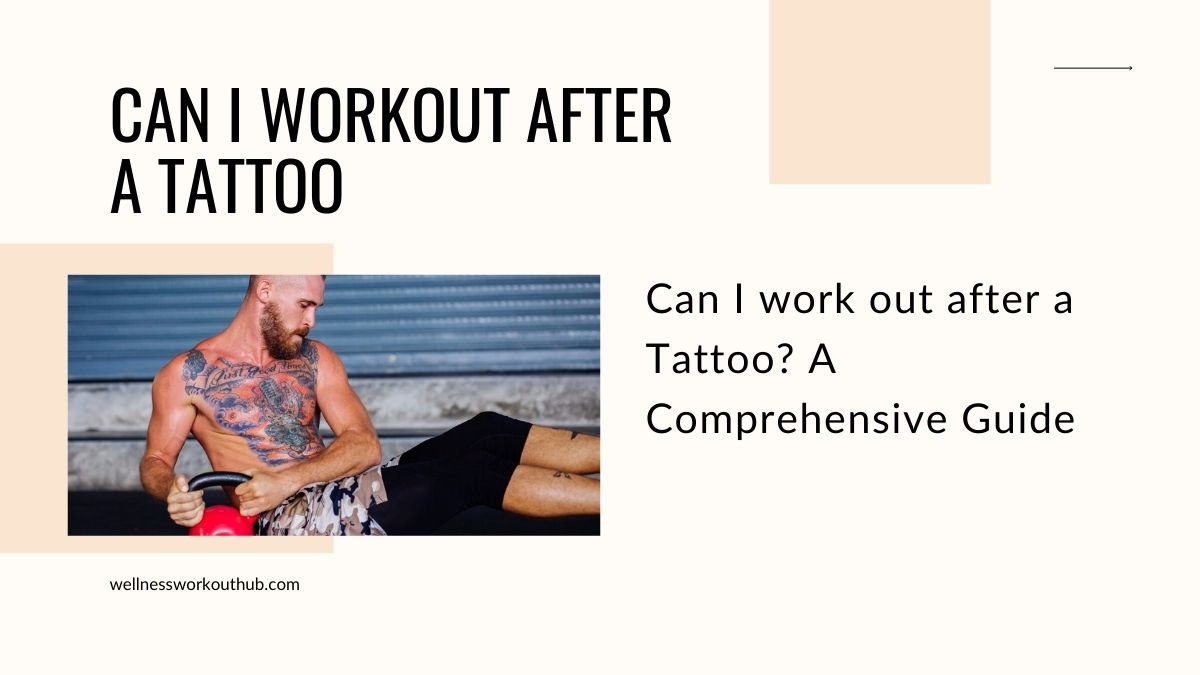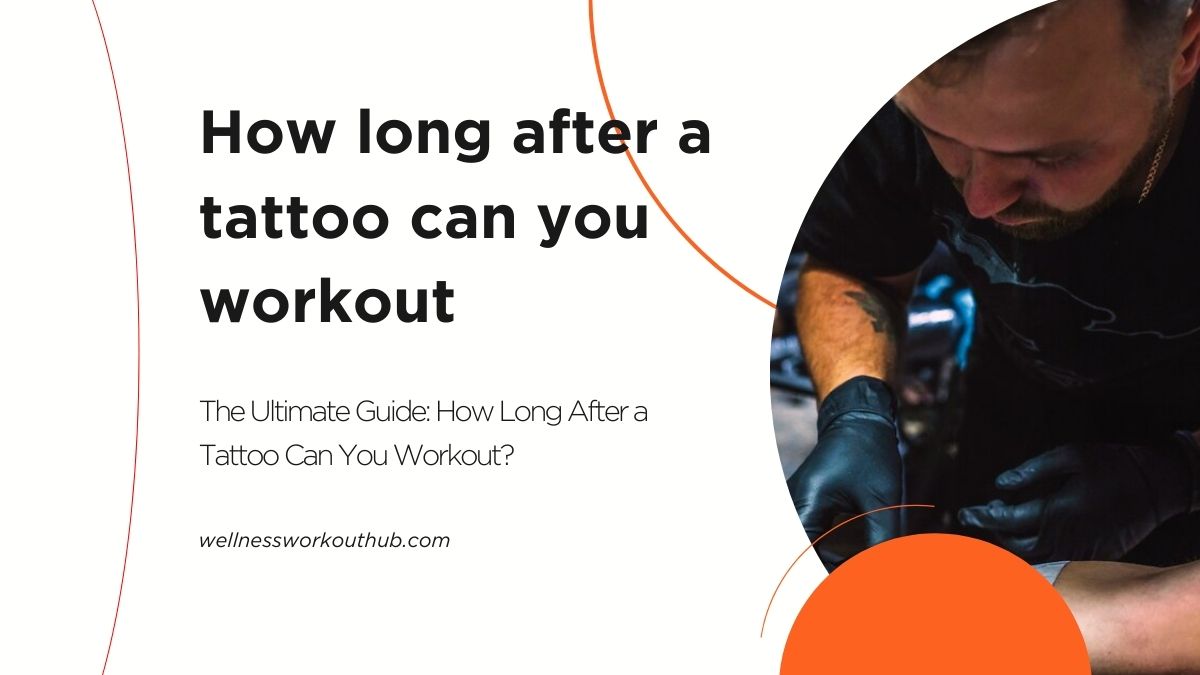Congratulations on your new tattoo! Whether it’s your first or your latest addition to your ink collection, the excitement of getting a tattoo is unparalleled. However, as you bask in the thrill of your new body art, you may be wondering about the practicalities – specifically, whether it’s safe to hit the gym or engage in physical activity after getting a tattoo. In this comprehensive guide, we’ll delve into the nuances of exercising post-tattoo, covering the tattoo healing process, factors to consider, safe exercise practices, and potential risks. By the end, you’ll be equipped with the knowledge to navigate the delicate balance between fitness and tattoo care.
Understanding the Tattoo Healing Process
Overview of Tattoo Healing Stages
Before diving into the specifics of exercising after getting a tattoo, it’s crucial to understand the tattoo healing process. Tattoos go through several stages of healing, including inflammation, scabbing, peeling, and fading. During the initial stage, the body’s immune response triggers inflammation around the tattooed area, leading to redness, swelling, and tenderness. As the tattoo heals, scabs may form, followed by peeling as the skin regenerates. Over time, the tattoo may fade slightly, but proper care can help preserve its vibrancy.
Importance of Allowing Proper Healing
Allowing your tattoo to heal properly is essential for ensuring optimal results and minimizing the risk of complications. Rushing the healing process or engaging in activities that irritate the tattooed area can lead to problems such as infection, scarring, and distortion of the tattoo. Therefore, it’s crucial to follow post-tattoo care instructions provided by your tattoo artist and prioritize rest and recovery during the healing period.
Common Post-Tattoo Care Instructions
Tattoo artists typically provide specific post-tattoo care instructions to help clients navigate the healing process. These instructions may include keeping the tattoo clean and moisturized, avoiding direct sunlight and swimming pools, and refraining from scratching or picking at the tattooed area. Following these guidelines diligently can promote proper healing and preserve the integrity of your new tattoo.
Factors to Consider Before Exercising
Importance of Consultation
Before jumping back into your regular workout routine, it’s crucial to consult with your tattoo artist or a healthcare professional. They can provide personalized advice based on factors such as tattoo size, location, and complexity, as well as your overall health and fitness level. Your tattoo artist may recommend specific precautions or adjustments to your exercise routine to protect the tattoo during the healing process.

Individual Factors That Affect Exercise
Several individual factors can influence your ability to exercise after getting a tattoo. The size and location of the tattoo, as well as the level of discomfort or sensitivity you experience, can impact your ability to engage in certain activities. For example, tattoos on areas prone to friction or movement, such as the elbows or knees, may require more caution during exercise. Additionally, tattoos that cover a large surface area may take longer to heal and may require more careful management during physical activity.
Potential Risks and Complications
While exercise is generally beneficial for overall health and well-being, engaging in strenuous activity too soon after getting a tattoo can pose risks. Exercise-induced sweating, friction from clothing or equipment, and repetitive movements can irritate the tattooed area and disrupt the healing process. In some cases, this irritation can lead to complications such as infection, scabbing, or loss of color in the tattoo. Therefore, it’s important to weigh the potential risks and benefits before resuming exercise post-tattoo.
Safe Exercise Practices After Getting a Tattoo
Recommended Timeline for Resuming Exercise
The timeline for resuming exercise after getting a tattoo can vary depending on individual factors and the size and complexity of the tattoo. In general, it’s advisable to wait until the initial healing stages, including inflammation and scabbing, have subsided before engaging in strenuous activity. This typically takes around 2-4 weeks, but larger or more intricate tattoos may require longer recovery periods. It’s essential to listen to your body and avoid pushing yourself too hard too soon.
Modifying Workouts to Minimize Irritation
When you’re ready to ease back into exercise, consider modifying your workouts to minimize irritation to the tattooed area. Avoid exercises that involve direct pressure or friction on the tattoo, such as weightlifting or high-impact activities. Instead, opt for low-impact exercises like walking, swimming, or gentle stretching. Be mindful of any discomfort or sensitivity you experience and adjust your workout intensity accordingly.
Tips for Protecting the Tattoo During Exercise
To protect your tattoo during exercise, take proactive measures to minimize the risk of irritation or damage. Wear loose-fitting clothing made from breathable fabrics to reduce friction and allow the tattooed skin to breathe. Avoid tight or restrictive clothing that may rub against the tattooed area and exacerbate discomfort. If possible, choose workout gear that covers the tattoo and provides a barrier between the skin and external elements. Additionally, be mindful of your surroundings and avoid activities that expose the tattoo to potential hazards, such as contact sports or rough terrain.
Potential Risks of Exercising Too Soon
Understanding the Risks
Exercising too soon after getting a tattoo can increase the risk of complications and hinder the healing process. Sweating during exercise can introduce bacteria to the tattooed area, leading to infection or other issues. Friction from clothing or equipment can irritate and disrupt the formation of new skin cells, resulting in scabbing or peeling. Additionally, repetitive movements can stretch or distort the tattoo, affecting its appearance and longevity.
Common Problems That May Arise
Several common problems may arise if you exercise workout too soon after getting a tattoo. These may include increased redness, swelling, or tenderness around the tattooed area, as well as delayed healing and prolonged discomfort. In some cases, exercising too soon can cause the tattoo to become distorted or faded, requiring touch-ups or additional corrective measures. It’s essential to be mindful of these potential risks and prioritize the healing process to avoid complications.
Importance of Prioritizing Tattoo Healing
Ultimately, prioritizing the healing process is paramount when it comes to exercising after getting a tattoo. While staying active is important for overall health and well-being, it’s essential to give your body the time and space it needs to heal properly. This may require temporarily modifying your exercise routine, avoiding certain activities, or taking additional precautions to protect the tattooed area. By prioritizing tattoo healing and following post-care instructions diligently, you can minimize the risk of complications and enjoy your new ink for years to come.

Listening to Your Body
Paying Attention to Signals
As you navigate the decision of whether to exercise after getting a tattoo, it’s crucial to listen to your body’s signals. Pay attention to any discomfort, sensitivity, or changes in the tattooed area during and after exercise. If you experience excessive pain, swelling, or unusual symptoms, it’s important to stop exercising and consult with your tattoo artist or healthcare provider for guidance. Your body knows best, so trust your instincts and prioritize your health and well-being above all else.
Importance of Rest and Recovery
In addition to listening to your body, it’s important to prioritize rest and recovery during the workout tattoo healing process. Adequate rest is essential for supporting the body’s natural healing mechanisms and promoting optimal recovery. Avoid overexerting yourself or pushing through pain or discomfort, as this can delay healing and increase the risk of complications. Instead, focus on activities that promote relaxation and minimize stress, such as gentle stretching, meditation, or light movement.
Erring on the Side of Caution
When in doubt, it’s always better to err on the side of caution when it comes to exercising after getting a tattoo. While it can be tempting to resume your regular workout routine as soon as possible, rushing the healing process can have long-term consequences for your tattoo and your overall health. Take the time to prioritize tattoo healing and follow post-care instructions diligently, even if it means temporarily adjusting your exercise routine. Your body will thank you in the long run.
Conclusion
Congratulations! You’ve reached the end of our comprehensive guide on exercising after getting a tattoo. We’ve covered everything from the tattoo workout healing process to safe exercise practices and potential risks. By understanding the importance of allowing your tattoo to heal properly, consulting with professionals, and listening to your body’s signals, you can make informed decisions about when and how to resume exercise post-tattoo. Remember, your tattoo is a work of art that deserves to be treated with care and respect. So take it slow, prioritize healing, and enjoy the journey of watching your ink come to life!
FAQs About Exercising After Getting a Tattoo
It’s generally recommended to avoid swimming, particularly in pools, oceans, or hot tubs, until your tattoo has fully healed. Submerging the tattooed area in water can increase the risk of infection and interfere with the healing process. If you must swim, take precautions to protect your tattoo, such as covering it with a waterproof bandage or avoiding prolonged exposure to water.
The timeline for resuming weightlifting or other strenuous activities after getting a tattoo can vary depending on individual factors and the size and complexity of the tattoo. In general, it’s advisable to wait until the initial healing stages, including inflammation and scabbing, have subsided before engaging in weightlifting. This typically takes around 2-4 weeks, but larger or more intricate tattoos may require longer recovery periods. Consult with your tattoo artist or healthcare provider for personalized advice.
Engaging in cardio or high-intensity workouts too soon after getting a tattoo can increase the risk of complications and hinder the healing process. Sweating, friction, and repetitive movements can irritate the tattooed area and disrupt the formation of new skin cells, leading to delayed healing or other issues. It’s important to prioritize rest and recovery during the initial healing stages and gradually ease back into exercise as your tattoo heals. If you experience any discomfort or unusual symptoms, stop exercising and consult with a professional for guidance.

